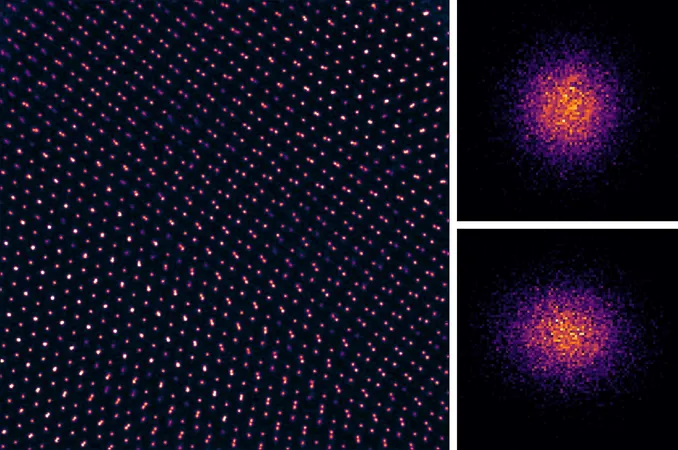
Revolutionary Breakthrough: Scientists Uncover Hidden Vibrations at the Atomic Level!
2025-07-26
Author: Wei Ling
When you think of vibrations, you might picture the simple buzz of your phone or the hum of a toothbrush. But researchers have taken this concept to groundbreaking new heights, diving deep into the atomic vibrations that govern the microscopic world.
In an astonishing first, scientists from The Grainger College of Engineering at the University of Illinois at Urbana-Champaign have harnessed cutting-edge imaging technology to unveil a brand new dimension of vibrational physics lurking within two-dimensional (2D) materials. Their groundbreaking research, recently published in the prestigious journal Science, confirms the existence of previously undetected vibrational modes and captures the most detailed images ever taken of individual atoms.
Why are 2D materials significant? These materials, with a thickness of merely a few atoms, hold immense potential for the next generation of electronics. Their unique properties allow them to be extremely miniaturized without sacrificing functionality. Central to this innovation is the creation of Moiré systems—stacked 2D materials whose atomic lattices twist and misalign.
One of the key discoveries in this study is the identification of Moiré phonons, which are low-frequency vibrational modes specific to twisted bilayer structures. Understanding these modes can illuminate how heat is expressed at the atomic level. Adding another layer of complexity, phasons—vibrational modes related to atomic motion—may also play a vital role in the extraordinary characteristics of these materials. Until now, scientists could only speculate about phasons, as direct evidence had remained elusive.
Professor Pinshane Huang, a leading figure in materials science, encapsulated the challenge: "You can't easily get rid of phasons; that's the blessing and the curse. They’ve always influenced the properties of 2D Moiré materials without us being able to directly observe them." Driven by curiosity, Huang explored how the latest advancements in imaging technology could finally allow researchers to visualize these elusive vibrational modes.
"Our main goal was to make heat visible at the atomic level," Huang stated. "By achieving such high spatial resolution, we could observe tiny movements of atoms that change how they appear under a microscope. We are now able to watch individual atoms dance as they respond to heat!"
To capture these remarkable images, the research team employed a state-of-the-art method called electron ptychography, which significantly boosts the resolution of traditional microscopes. With this technique, they achieved an unprecedented spatial resolution on the picometer scale, observing thermal vibrations in twisted bilayer WSe2 atoms.
Reflecting on the evolution of imaging, Huang noted, "Earlier in my career, the highest resolution we aimed for was just under one angstrom. But with the advent of ptychography, we are now witnessing numbers as low as 0.2 angstroms. Since heat vibrates atoms by about 0.05 angstroms, this advancement lets us visualize dynamics in a way we never thought possible!"
The implications of these findings are monumental. Engineers at Illinois envision a future where phasons could play a transformative role in crafting electronics that operate in entirely new ways, pushing the boundaries of what we thought was achievable in material science.




 Brasil (PT)
Brasil (PT)
 Canada (EN)
Canada (EN)
 Chile (ES)
Chile (ES)
 Česko (CS)
Česko (CS)
 대한민국 (KO)
대한민국 (KO)
 España (ES)
España (ES)
 France (FR)
France (FR)
 Hong Kong (EN)
Hong Kong (EN)
 Italia (IT)
Italia (IT)
 日本 (JA)
日本 (JA)
 Magyarország (HU)
Magyarország (HU)
 Norge (NO)
Norge (NO)
 Polska (PL)
Polska (PL)
 Schweiz (DE)
Schweiz (DE)
 Singapore (EN)
Singapore (EN)
 Sverige (SV)
Sverige (SV)
 Suomi (FI)
Suomi (FI)
 Türkiye (TR)
Türkiye (TR)
 الإمارات العربية المتحدة (AR)
الإمارات العربية المتحدة (AR)